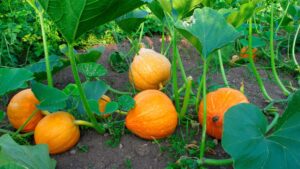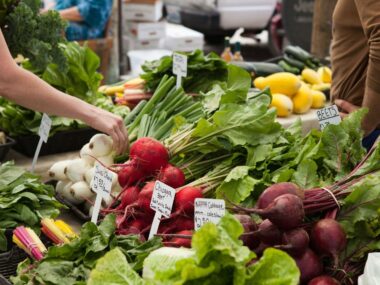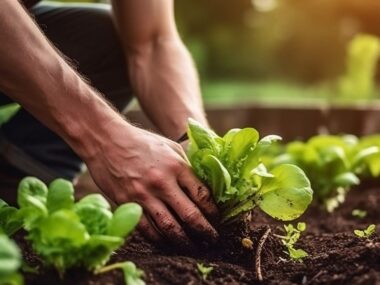Pumpkin vegetation, belonging to the Cucurbitaceae family, is a fascinating plant with a rich history and wide uses. Here, let’s explore the various aspects of pumpkin vegetation:
Botanical Characteristics
- Pumpkins (Cucurbita pepo) are a type of squash that belongs to the gourd family. They are characterized by their sprawling vines, large leaves, and vibrant orange fruits.
- The vines of pumpkin plants can grow quite extensively, often reaching lengths of several meters. These vines produce tendrils that help the plant climb and support itself as it spreads across the ground or climbs on trellises.
- Pumpkin leaves are broad and lobed, with a rough texture. They play a crucial role in photosynthesis, capturing sunlight to produce energy for the plant.
- Pumpkin flowers are typically bright yellow and have both male and female blooms. Bees and other pollinators are attracted to these flowers, aiding in the process of pollination necessary for fruit development.
Growth Habit and Requirements

- Pumpkins are warm-season plants that thrive in well-drained, nutrient-rich soil and full sun. They require a long growing season, typically around 75 to 100 days from planting to harvest.
- While pumpkins can be grown directly in the ground, they also do well in raised beds or containers, provided they have enough space for their sprawling vines.
- Adequate spacing between plants is essential to prevent overcrowding and promote air circulation, which helps reduce the risk of diseases such as powdery mildew.
- Pumpkins have shallow root systems, so regular watering is crucial, especially during dry periods. Mulching around the base of the plants can help retain moisture and suppress weed growth.
Pollination and Fruit Development
- Pumpkins have separate male and female flowers on the same plant. The male flowers typically appear first and produce pollen, while the female flowers develop later and contain the ovary, which will develop into the fruit if pollinated.
- Pollination in pumpkins is primarily carried out by bees and other pollinators, which transfer pollen from the male flowers to the female flowers as they forage for nectar.
- Adequate pollination is essential for fruit development. Insufficient pollination can result in poor fruit set or misshapen fruits.
- Once pollinated, the female flowers develop into pumpkins. Pumpkins vary in size, shape, and colour depending on the variety. They typically start green and gradually turn orange as they mature.
Uses and Culinary Significance
- Pumpkins are highly versatile and are used in a variety of culinary applications. The flesh of the pumpkin can be roasted, boiled, mashed, or pureed to make soups, stews, pies, and other dishes.
- Pumpkin seeds, also known as pepitas, are nutritious and can be roasted and eaten as a snack or used as a garnish for salads and other dishes.
- Beyond culinary uses, pumpkins are also used for decorative purposes, especially during the fall season. Carving pumpkins into jack-o’-lanterns is a popular tradition during Halloween.
- Pumpkins are also valued for their nutritional content, as they are rich in vitamins, minerals, and antioxidants. They are low in calories and high in fibre, making them a healthy addition to a balanced diet.
Cultural and Symbolic Significance
- Pumpkins have deep cultural and symbolic significance in various societies around the world. In many cultures, pumpkins are associated with harvest festivals, abundance, and fertility.
- In North America, pumpkins are closely linked to Thanksgiving and Halloween traditions. Pumpkin pie, pumpkin spice lattes, and pumpkin carving are all popular activities during the fall season.
- Pumpkins are also associated with folklore and legends, often depicted as symbols of transformation or protection against evil spirits.
- In some cultures, pumpkin flowers and leaves are also used in traditional medicine for their purported medicinal properties, such as anti-inflammatory and diuretic effects.
In conclusion, pumpkin vegetation is not only a staple of the culinary world but also a fascinating plant with rich cultural and symbolic significance.
From their sprawling vines and vibrant flowers to their versatile fruits, pumpkins continue to captivate and inspire people around the world.
Whether grown in home gardens or harvested from commercial farms, pumpkins are a symbol of abundance, nourishment, and the changing seasons.
Related Tags
Taiwo Olawuyi
Taiwo Olawuyi is a highly dedicated and passionate professional blogger, renowned for her ability to create captivating, informative, and engaging content in the realm of health and wellness. She holds a Bachelor's degree in Political Science from Olabisi Onabanjo University and a Master's degree in Adult Education from the prestigious University of Ibadan. Her profound passion for health and wellness, coupled with her unwavering dedication to her audience, serves as a constant source of inspiration and enlightenment for readers worldwide.










